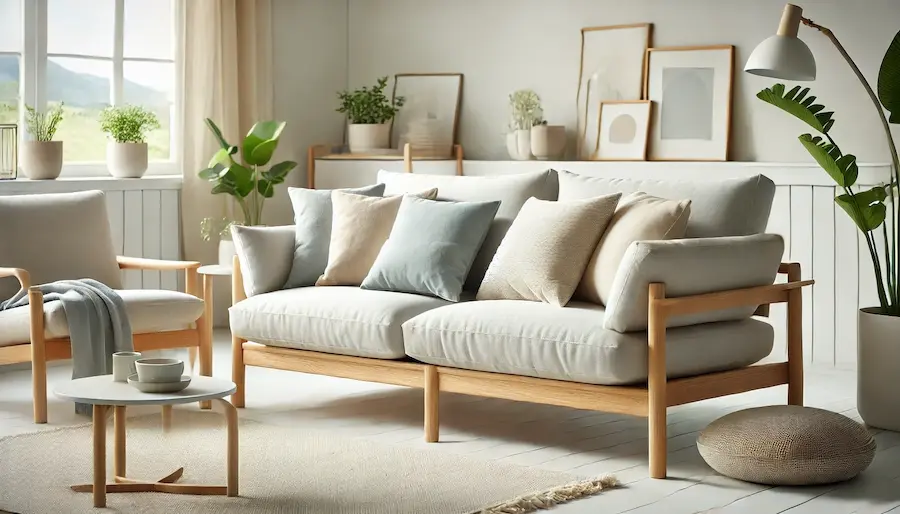Scandinavian sofas are celebrated for their minimalist design, functionality, and timeless appeal. This article explores the origins, key features, applications, and considerations when selecting a Scandinavian sofa for your space.
Introduction to Scandinavian Sofas
Originating from the Nordic countries—Denmark, Norway, Sweden, and Finland—Scandinavian sofas embody a design philosophy that emphasizes simplicity, functionality, and a deep connection to nature. These pieces are crafted to offer comfort and utility while maintaining an elegant and understated aesthetic, making them a popular choice in contemporary interiors.
History and Origins of Scandinavian Sofas
The roots of Scandinavian design can be traced back to the early 20th century, with a significant evolution during the mid-century modern period. Pioneering designers such as Arne Jacobsen, known for creations like the Egg Chair and Swan Chair, played a pivotal role in shaping the movement. Their work emphasized clean lines, organic forms, and a commitment to functionality, principles that continue to influence Scandinavian furniture design today.
Key Features of Scandinavian Sofas
Scandinavian sofas are distinguished by several hallmark characteristics:
- Minimalist Design: Emphasis on clean lines and simple forms, avoiding unnecessary ornamentation.
- Natural Materials: Utilization of high-quality, natural materials such as wood, leather, and wool, reflecting a connection to nature.
- Neutral Color Palettes: Predominantly featuring shades of white, gray, beige, and soft pastels to create a calm and inviting atmosphere.
- Functionality: Designs that prioritize practicality, often incorporating modular elements to adapt to various needs.
Applications of Scandinavian Sofas
The versatility of Scandinavian sofas allows them to complement various interior styles:
- Modern Living Spaces: Their minimalist aesthetic aligns seamlessly with contemporary decor, enhancing the sense of openness and light.
- Small Apartments: The functional design and compact forms are ideal for maximizing space in smaller living areas.
- Office Environments: Scandinavian sofas can introduce a touch of elegance and comfort to professional settings, promoting a welcoming atmosphere.
Considerations When Choosing a Scandinavian Sofa
When selecting a Scandinavian sofa, consider the following factors:
- Size and Proportion: Ensure the sofa’s dimensions are appropriate for your space to maintain balance and harmony.
- Material Quality: Opt for sofas made with durable, natural materials that offer longevity and comfort.
- Color Scheme: Choose neutral tones that align with your existing decor, or consider soft pastel accents for a subtle pop of color.
- Functionality: Look for designs that offer practical features, such as modular components or storage solutions, to enhance utility.
Conclusion
Scandinavian sofas encapsulate a design ethos that values simplicity, functionality, and a harmonious connection to nature. Their timeless appeal and versatility make them a fitting choice for various interior settings, offering both aesthetic beauty and practical comfort.
